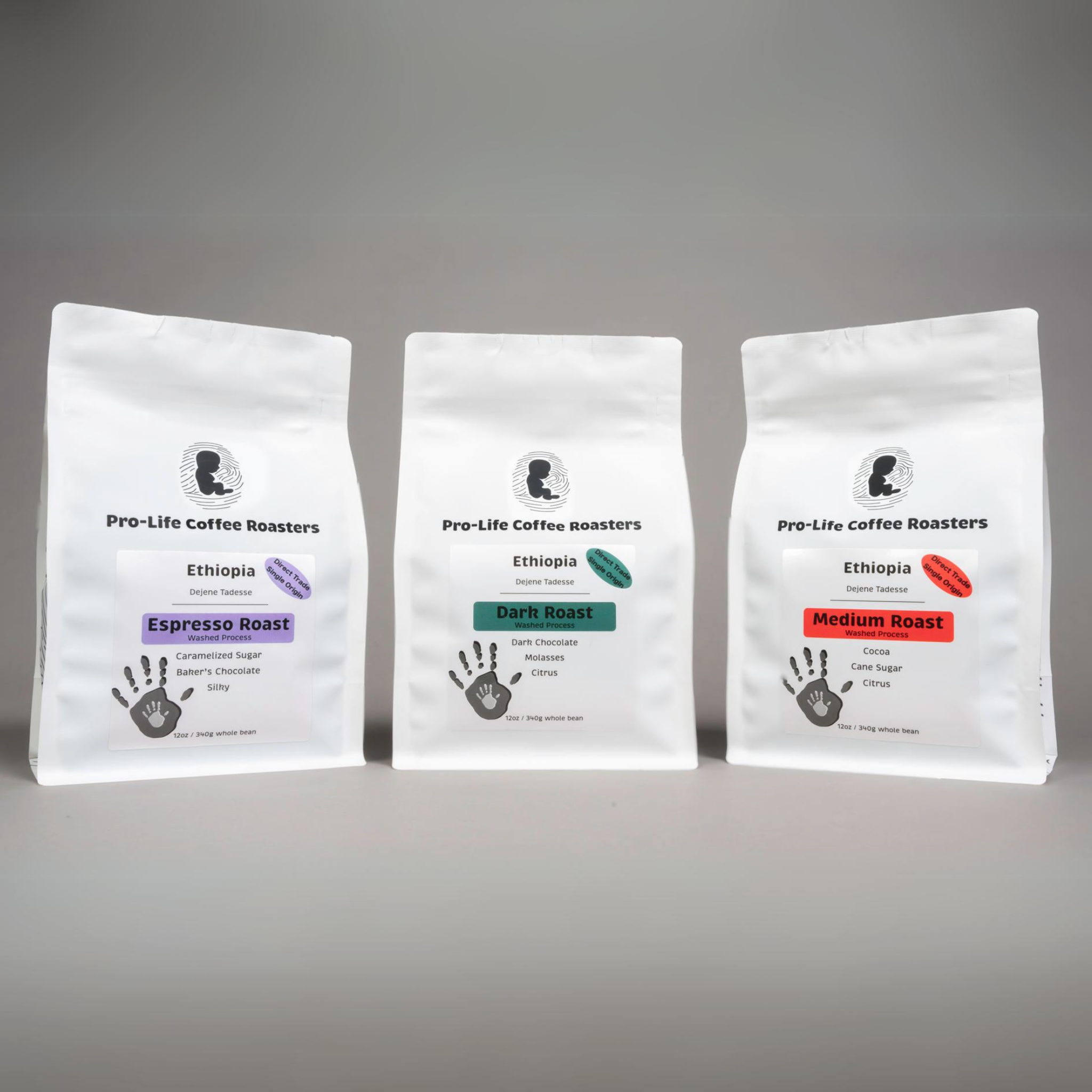Recognizing Coffee Beans: the Journey From Espresso to Blended Coffee Beans

The Origins of Coffee: A Global Perspective
While you may think of coffee as a modern-day staple, its origins trace back centuries, linking with cultures throughout the world. The story begins in Ethiopia, where legend states a goat herder called Kaldi discovered the energizing effects of coffee beans after discovering his goats romping energetically after consuming them.
As trade courses increased, coffee made its way to Europe in the 17th century, swiftly acquiring appeal. It transformed from a magical beverage into an everyday routine, intellectual exchanges and motivating gatherings. Each society included its distinct spin to coffee prep work, enriching its background. This global trip highlights how coffee attaches us, transcending boundaries and uniting varied customs through a straightforward bean.
Farming and Harvesting of Coffee Beans
As coffee's trip evolved, the focus moved to the growing and harvesting of details bean varieties, particularly those made use of for coffee. You'll locate that coffee beans typically originate from Arabica or Robusta plants, each offering distinctive tastes. The perfect growing conditions include high altitudes and rich, well-drained soil, which improve the beans' quality.
During the harvest, picking approaches vary. In some areas, workers hand-pick ripe cherries, making certain only the most effective fruit goes to handling. In other locations, mechanical harvesters are made use of, especially on bigger farms. Timing is crucial; you want to collect when the cherries reach peak ripeness for maximum taste.
Once gathered, the beans are prepared for processing, which is crucial in establishing their last taste. Comprehending the farming and gathering processes provides you understanding right into what goes right into your favored espresso, enhancing your gratitude for each and every mug.
Processing Approaches: From Cherry to Bean
Now that you have actually discovered gathering coffee beans, allow's explore just how those cherries transform right into the coffee beans you like. You'll see just how various harvesting methods influence flavor, adhered to by the necessary steps of fermentation and drying out. We'll damage down the milling and grading process that establishes your coffee's high quality.
Harvesting Methods Discussed
When it comes to coffee, understanding harvesting strategies is vital, because they directly impact the taste and top quality of the beans you take pleasure in. Selective picking entails hand-picking only ripe cherries, ensuring you get the best quality beans. Ultimately, the choice of harvesting technique can significantly influence your coffee experience, so it's worth knowing how those beans made it to your cup.
Fermentation and Drying
After collecting, the following action in processing coffee beans play a considerable role fit their taste. You'll find that fermentation is vital, as it helps damage down the mucilage bordering the beans, improving their taste account. Relying on the technique, this process can last from a couple of hours to a number of days, with varying results based upon temperature level and humidity.
Sun-drying enables the beans to take in flavors from the setting, while mechanical drying assurances constant wetness levels regardless of weather. Proper drying is crucial to avoid mold and mildew and protect the beans' top quality, ultimately influencing your cup of coffee.
Milling and Grading Refine
As fermentation and drying established the phase for taste development, the milling and grading process warranties that only the finest coffee beans make it to your cup. This stage includes eliminating the external layers of the coffee cherry, consisting of the parchment and husk. High-grade beans obtain a higher grade, resulting in a richer coffee experience.
Roasting Techniques: Unlocking Flavor Prospective
When you roast coffee beans, the technique you pick can considerably influence the taste profile. Understanding the connection between time, temperature level, and roasting methods is crucial to disclosing the possibility of your mixture. Let's check out exactly how these elements collaborated to produce the ideal mug.
Toasting Methods Clarified
While you could assume that all coffee toasting methods yield the very same outcomes, the truth is that each strategy discloses special flavor capacities in the beans. Drum roasting makes use of a turning drum to evenly distribute warm, improving caramelization and producing a well balanced flavor. Air roasting, on the other hand, circulates warm air around the beans, promoting a lighter roast with pronounced acidity.

Influence On Flavor Profile
Different toasting methods not just influence the process but also greatly affect the taste account of the coffee beans. Dark roasts, on the various other hand, bring out vibrant, great smoky tastes, occasionally covering up the bean's unique characteristics. Understanding these nuances helps you appreciate the creativity behind your cup of coffee, enhancing your general experience with every sip.
Time and Temperature Elements
To release the full taste possibility of coffee beans, both time and temperature level throughout the toasting procedure play considerable functions. When toasting, you'll locate that greater temperature levels can swiftly create tastes, however if you rush it, you may wind up with charred notes. On the other hand, lower temperatures enable a much more progressive flavor development, showcasing the beans' distinct qualities.

Timing is equally as important; expanding the roast as well long can result in a loss of acidity and illumination, while as well brief a roast could leave the beans underdeveloped. Discovering that sweet place needs method and experimentation. By readjusting these variables, you can reveal the rich, intricate flavors hidden within each bean, developing a really impressive coffee experience.
The Art of Blending: Crafting Special Coffee Accounts

Begin by selecting a base coffee that supplies a strong structure. An intense Ethiopian bean can bring fruitiness, while an abundant Brazilian coffee includes body.
As you blend, remember that each combination tells a tale. You're not just making coffee; you're producing an experience. Take your time, preference frequently, and delight in the trip of uncovering your trademark mix - Single Origin Espresso.
Developing Methods: How Preparation Influences Flavor
Blending coffee opens up a domain of flavor opportunities, however exactly how you make that blend can substantially influence your last cup. Various brewing approaches extract one-of-a-kind tastes and scents, so it's essential to choose wisely. A French press permits sediments and oils to continue to be, developing a rich, full-bodied experience. On the various other hand, a pour-over highlights the coffee's clearness and brightness, excellent for showcasing fragile notes.
Espresso, with its high pressure, generates a focused shot that highlights sweetness and crema. If you choose a lighter brew, think about a cool mixture approach; it generates a smooth, much less acidic taste.
Adjusting variables like water temperature, grind size, and make time can change your coffee's profile. Accept the art of brewing to uncover the flavors concealed in your coffee blends.
The Future of Coffee: Sustainability and Advancement
As the coffee industry progresses, sustainability and technology are ending up being necessary for dealing with ecological difficulties and meeting consumer demands. You'll discover that even more coffee firms are taking on green practices, from sourcing beans fairly to applying sustainable farming methods. These changes not just help the world yet likewise enhance the high quality of the coffee you enjoy.
You may see technologies like naturally degradable packaging and water-saving brewing approaches that lower waste. Advanced innovation, such as blockchain, is additionally becoming prominent, making certain transparency in the supply chain, which permits you to trace your coffee back to its origins.
On top of that, buying local areas and sustaining farmers via reasonable profession campaigns fosters an extra sustainable coffee ecosystem. As you drink your following cup, keep in mind that your options can contribute to a brighter future for coffee. By choosing sustainable brand names, you're not simply appreciating a beverage; you're making a favorable effect on the world.
Regularly Asked Questions
What Is the Difference Between Arabica and Robusta Beans?
Arabica beans are smoother, sweeter, and have a greater level of acidity, while robusta beans are more powerful, more bitter, and consist of even more high levels of caffeine. When brewing your coffee., you'll see these distinctions in flavor and scent.
How Does Elevation Affect Coffee Bean Taste?
Elevation effects coffee bean flavor considerably. Higher altitudes create beans with brighter level of acidity and complicated flavors, while lower altitudes commonly generate beans that are heavier and less nuanced. You'll see these distinctions in your cup!
What Are the Health And Wellness Conveniences of Drinking Coffee?
Consuming coffee can improve your power, enhance mental emphasis, click and also boost physical performance. It's rich in anti-oxidants, might lower the risk of particular illness, and can promote a much healthier metabolic process when consumed in moderation.
Can Coffee Beans Be Recycled for Brewing?
Yes, you can recycle coffee beans for developing, but the flavor could be weaker. If you take pleasure in experimenting, try reusing them in various ways, like chilly mixtures or including to healthy smoothies for an added kick.
How Should I Store Coffee Beans for Freshness?
To maintain your coffee beans fresh, save them in an airtight container in a great, dark place. Avoid subjecting them to warm, light, or wetness, as these variables can quickly degrade their flavor and scent.
Recognizing Coffee Beans: the Trip From Coffee to Blended Coffee Beans.
Currently that you've learned regarding collecting coffee beans, allow's explore exactly how those cherries transform into the coffee beans you like.When you roast coffee beans, the technique you select can considerably impact the flavor profile - Single Origin Espresso.While you may assume that all coffee see here toasting approaches yield the exact same outcomes, the reality is that each method discloses unique flavor potentials in the beans.Different roasting techniques not just affect the procedure however additionally substantially affect the flavor profile of the coffee beans